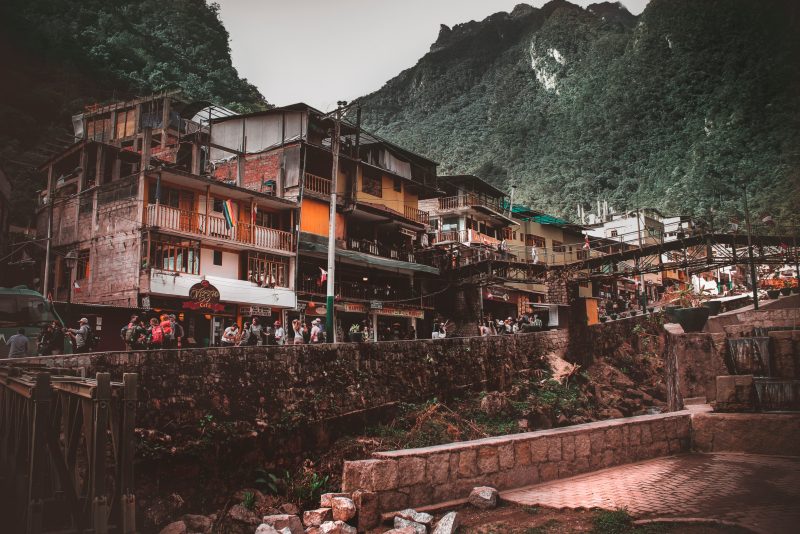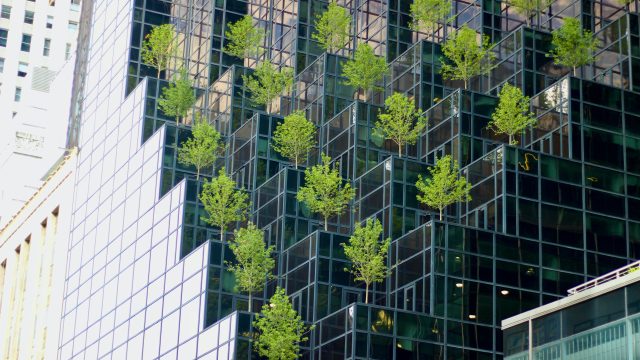Peru's green infrastructure challenge
Peru needs new roads and rail to support its growing population - but how can we make sure that its sustainable?

Leslie Forsyth is Executive Director of our in-country partner organisation in Peru, Foro Nacional Internacional. Here, she dissects a particularly important issue for the middle-income country: building new infrastructure that will support growth while also remaining sustainable.
Peru faces the challenge of meeting growing demand for infrastructure in the country in order to support regions that continue to be excluded economically. Development of infrastructure is a key driver for progress, as it promotes economic growth and production, contributing in the long term to poverty reduction, access to services and human development. It could also become a transformational driver for climate change if infrastructure can become sustainable in an environmental and social way.
National figures indicate that 87,7% of Peruvian homes have access to energy, nonetheless in some rural areas almost half of the houses do not have this access. In order to bridge the infrastructure gap, governments have to address their limitations and create alliances. An interesting alternative are Public Private Partnerships (PPP) which in most cases are able to provide lacking resources, access to advanced technology and more efficiency. PPP for infrastructure are becoming more common in developing countries such as Peru for several reasons; the lack of capacity in the public sector and financial constraints are some of the main ones.
Nonetheless, there are barriers which difficult private investment in infrastructure such as poor levels of transparency, corruption, gaps in institutional arrangements or the absence of an articulated national plan of infrastructure. These obstacles need to be addressed to facilitate these alliances and continue with the country’s development.
“ In countries like Peru, where development of infrastructure is seen as a wide opportunity for job creation as well as economic growth, it is fundamental that the development of green infrastructure is also recognized as provider of socio-economic benefits.”
Aside from this, PPP have been able to participate in infrastructure services providing energy, transport, communication and water, all of them delivered before by the public sector. Considering all the benefits this partnership could bring, especially in design matters, this should be a great opportunity for the design and implementation of sustainable infrastructure, in order to face the challenges posed by climate change.
Why does infrastructure need to be sustainable?
60% of carbon emissions comes from the construction and operation of infrastructure, while greater infrastructure investments are still to come in order to achieve Peru’s and the regions’ objectives; a complex geographical and social context emerges in Latin America for developing infrastructure. Impacts of climate change are one of the main obstacles for infrastructure, as severe losses have been experienced due to natural events, such as Phenomenon El Niño in Peru, costing $3.1 billion and over 549 bridges damaged. As each year the risk of climate change becomes higher it is essential to consider these factors in the design, construction, maintenance and financing of infrastructure.
The importance of sustainable infrastructure has gained room in the international discussion, to the extent of being addressed in goal 9 of the Sustainable Development Goals (SDGs). By committing to the SDGs, Peru has to pursue the development of the country in a sustainable way, for this case in particular, goal 9, “build resilient infrastructure, promote inclusive and sustainable industrialization and foster innovation” is the framework under which Peruvian institutions should address this topic; in a more specific way, goal 9.1 “Develop quality, reliable, sustainable and resilient infrastructure, including regional and transborder infrastructure to support economic development and human well-being, with a focus on affordable and equitable access for all”, and 9.5a, “facilitate sustainable and resilient infrastructure development in developing countries through enhanced financial, technological and technical support…” should be the referents for the actions and responses to be taken.
Defining a framework for sustainable infrastructure is important to incorporate it to a national plan, as this will provide a conceptual base for change in many institutional levels of the government and by this, facilitate the development of better projects that will ensure the accomplishment of national development objectives related to progress. The BID group defines sustainable infrastructure as “infrastructure projects that are planned, designed, constructed, operated, and decommissioned in a manner to ensure economic and financial, social, environmental (including climate resilience), and institutional sustainability over the entire life cycle of the project.”

Due to the complexity of infrastructure projects, different participants are engaged in the development of sustainable infrastructure across the project cycle and the different dimensions involved. For this reason, it is important to consider four dimensions of sustainable infrastructure, i) economic and financial sustainability; ii) environmental sustainability; iii) social sustainability and iv) institutional sustainability when planning, as each one of these will be a valuable basis for its correct implementation.
On the other hand, before designing sustainable infrastructure, it is crucial to analyse natural infrastructure and nature-based solutions as this should be the first prospects for solutions, particularly for complex geographical territories such as the Amazon where in many cases developing infrastructure includes deforestation, exposing biodiversity and native groups to risks.
An example of natural infrastructure is the Amazon waterway which is being implemented in order to articulate rivers Huallaga, Marañón, Ucayali y Amazonas and make them fit for navigation all year. This will bring enormous economic and social benefits, as rivers are one of the main forms of transport in the Amazon, as 90% of the passengers and freight travel through the rivers. The implementation of this project includes the cleaning and maintenance of the river from obstacles that impede navigation such as trunks and branches, as well as supplying information of water levels among others.
“ 60% of carbon emissions comes from the construction and operation of infrastructure, while greater infrastructure investments are still to come in order to achieve Peru’s and the regions’ objectives.”
Green Infrastructure is defined by the EU as “strategically planned network of natural and semi-natural areas with other environmental features designed and managed to deliver a wide range of ecosystem services such as water purification, air quality, space for recreation and climate mitigation and adaptation…”, developing green infrastructure will reduce dependence on “grey” infrastructure and several benefits for citizens and biodiversity.
The UK was the first country to publish its Green Infrastructure Strategy and the EU has established its Biodiversity Strategy. Peru’s Ministry of Economy and Finance will publish its National Infrastructure Plan in 2019, based on guidelines defined in the National Competitiveness Policy which is also waiting for approval, which is expected to include green economy aspects as well as sustainable practices for production and competitiveness.
In countries like Peru, where development of infrastructure is seen as a wide opportunity for job creation as well as economic growth, it is fundamental that the development of green infrastructure is also recognized as provider of socio-economic benefits. Besides environmental benefits, green infrastructure complements other policies objectives such as mitigation of climate change, respect of traditional livelihoods and identity (ILO Convention 169), among others. It could also trigger the value of different ecosystem services, generating economic systems in territories that have been excluded for decades. The demonstration and acknowledgement of these returns could attract private investment under a conservation policy framework.
- Leslie Forsyth, Executive Director, FNI
Photo by Giancarlo Revolledo on Unsplash


